Where are the Flowers?
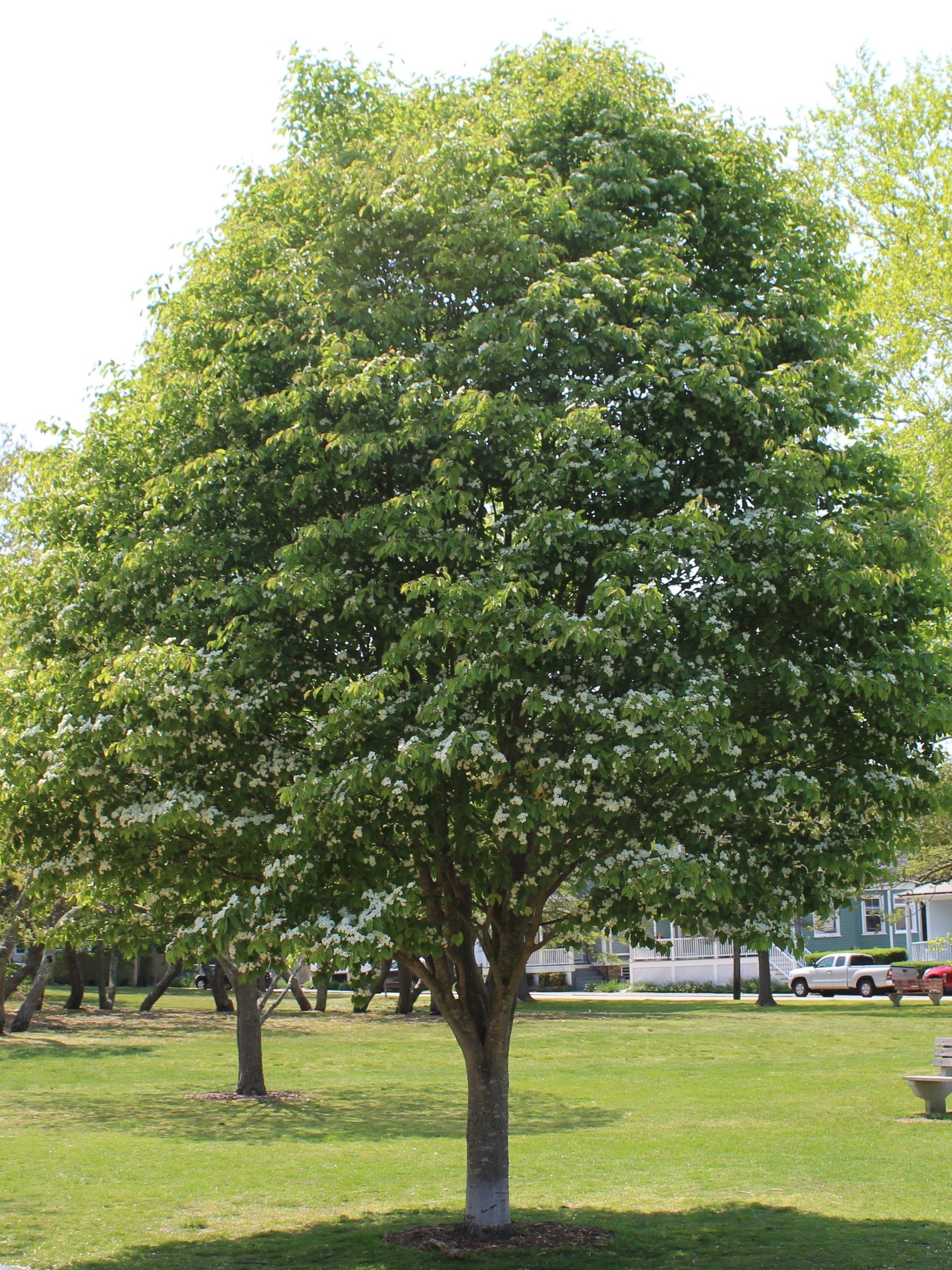
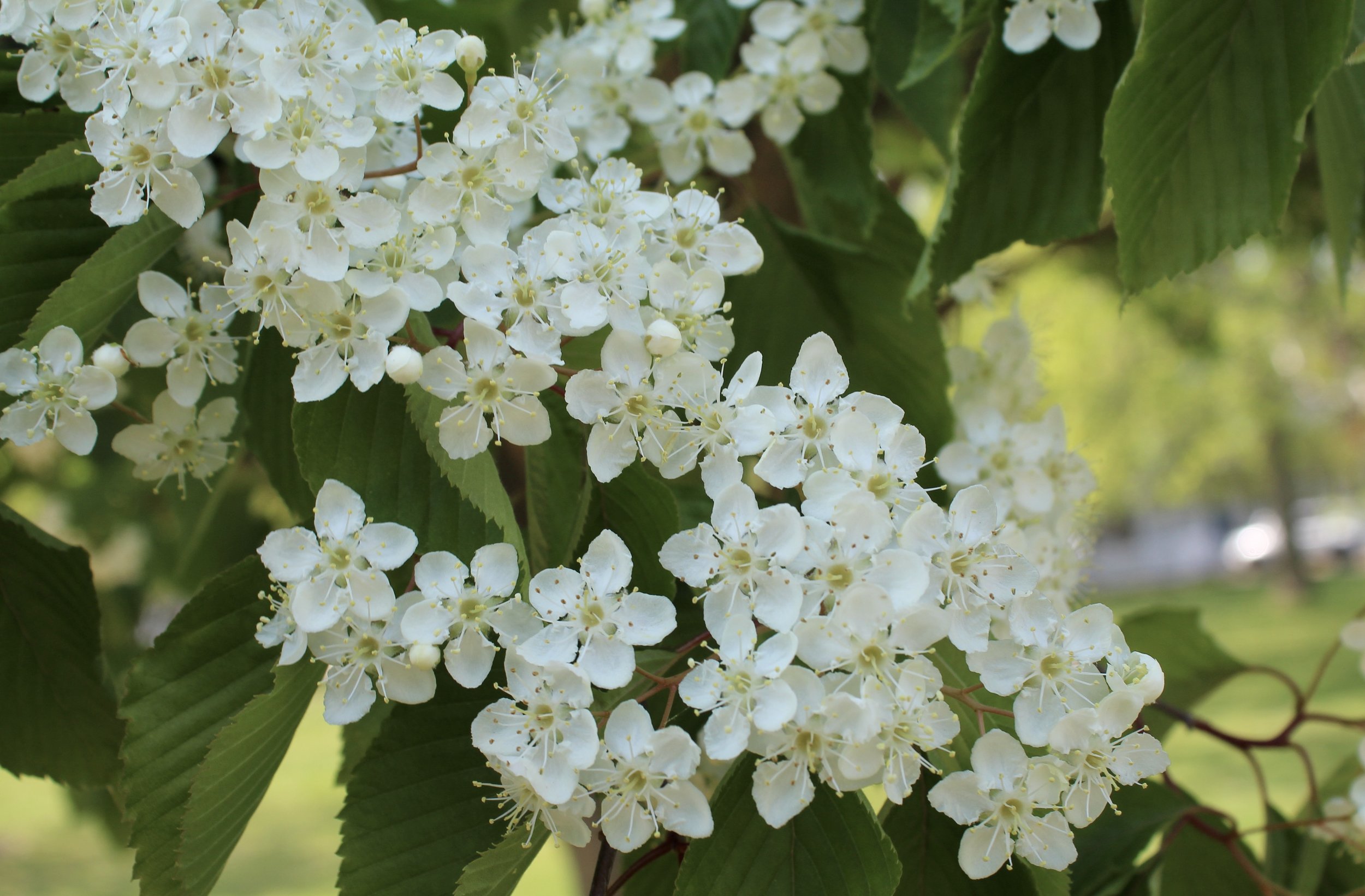
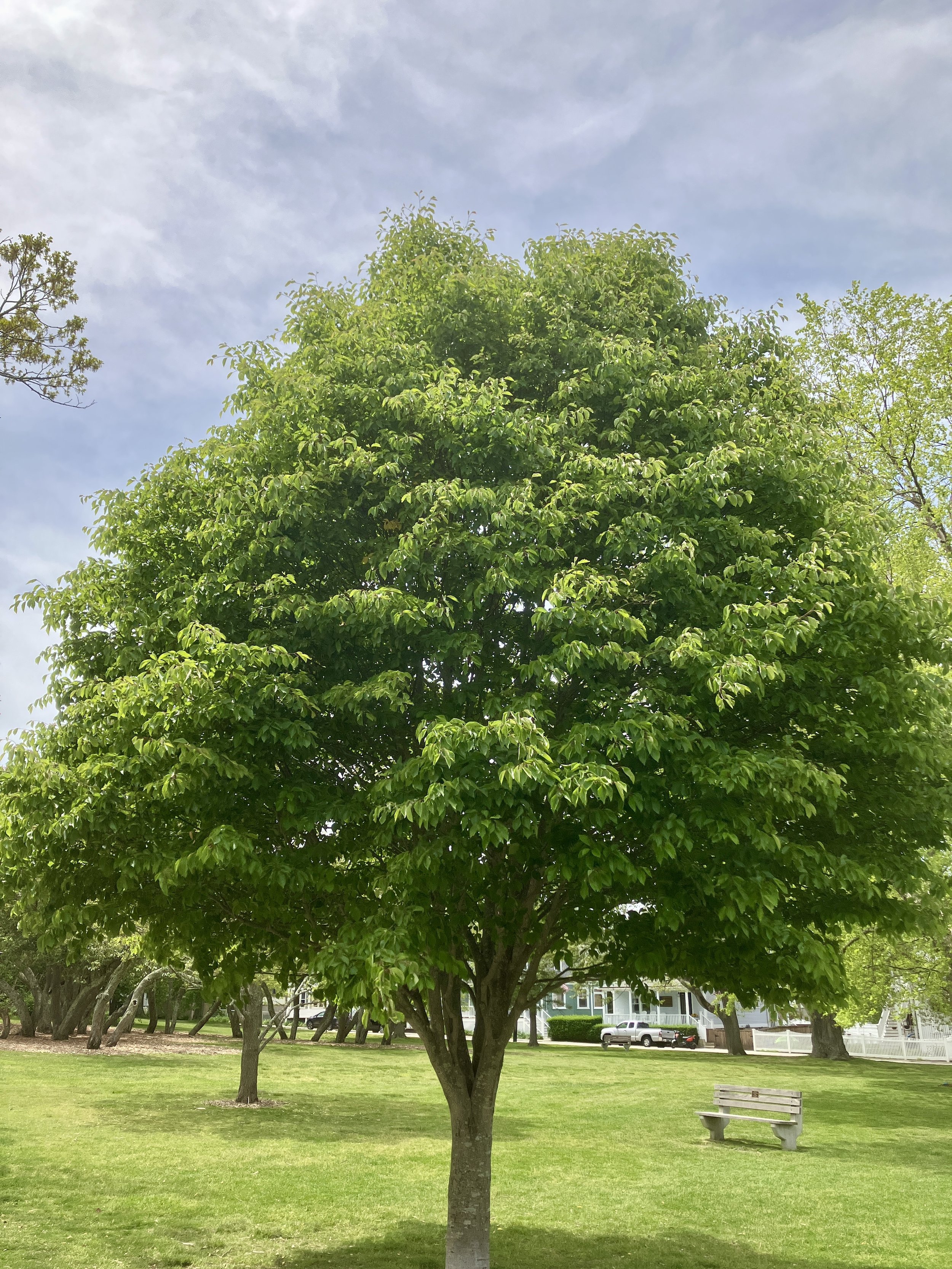
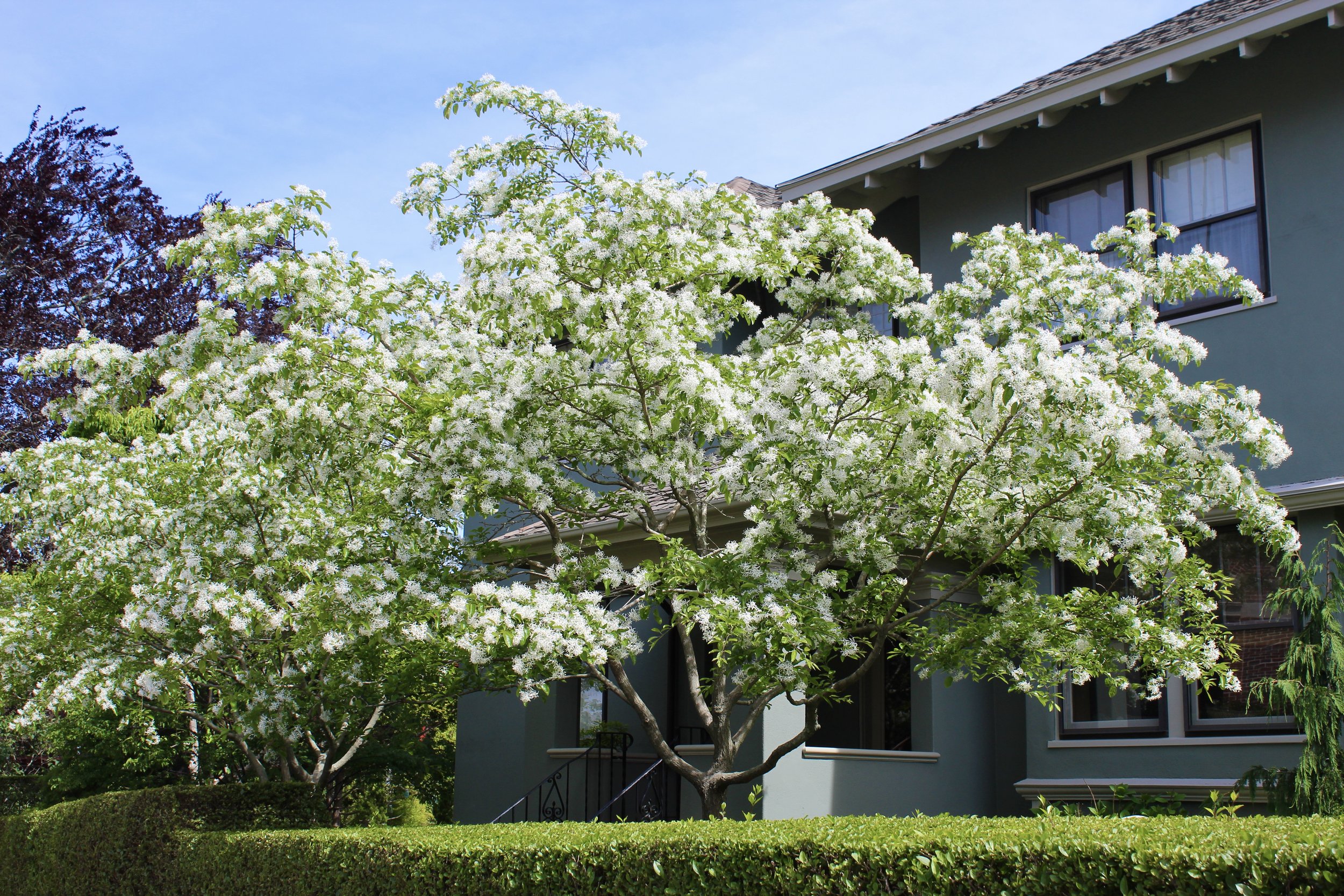
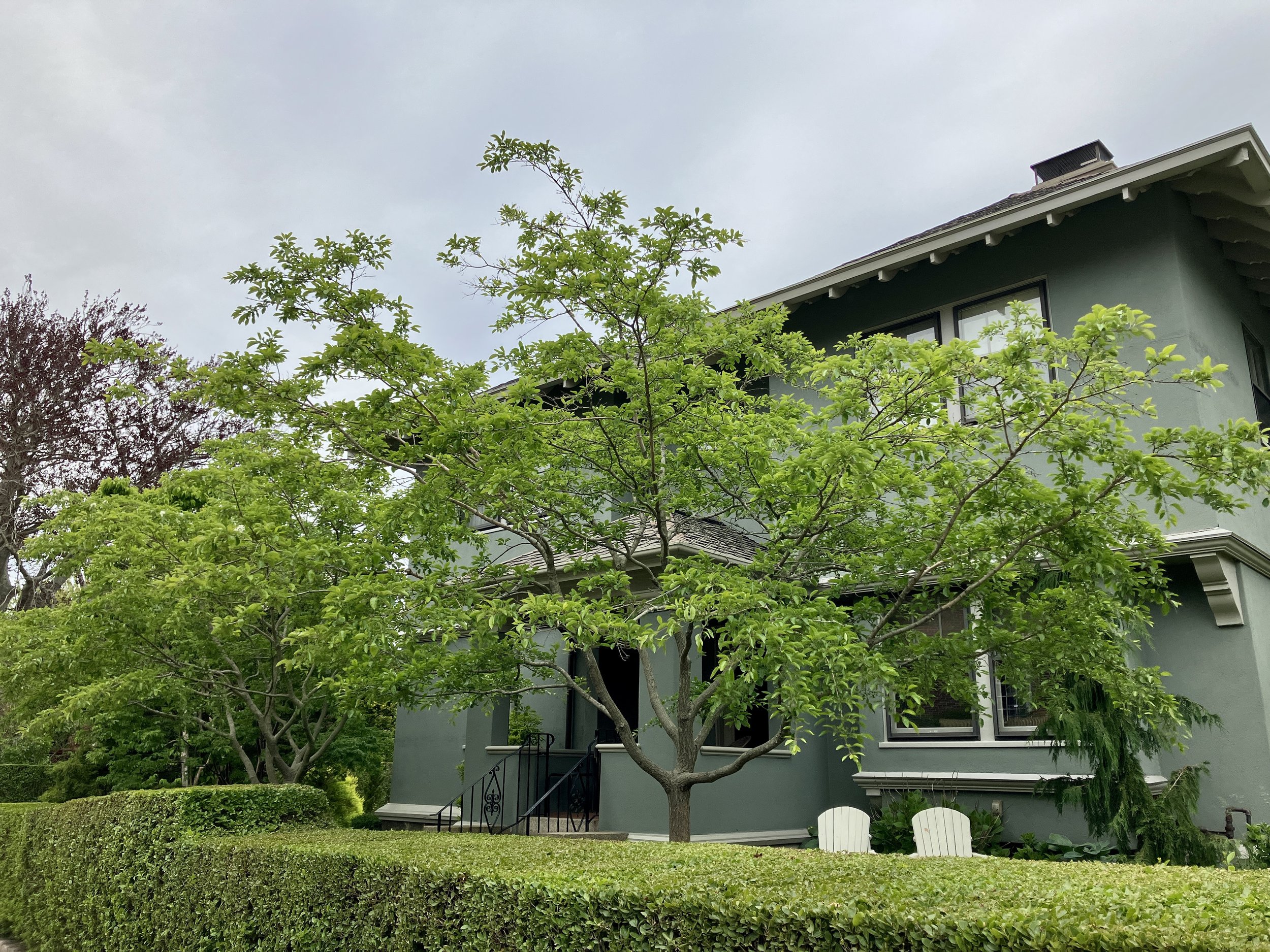
When I arrived in Newport last year, a graceful small tree with many superb qualities refused to reveal its identity to me. It stood alone, near the playground at Morton Park, not seeking any attention but certainly deserving of some. I watched on with ultimate curiosity as the lovely teardrop crown was engulfed with leaves that did not match those of which I recognized. Familiar white flower clusters followed, with the timing and morphology of Crataegus (Hawthorn), produced in high quantities. Certainly in the rose family (Rosaceae), but I was too busy and tired to search the literature for an answer. It wasn’t until sometime later when the attractive red fruits emerged that I secured my answer, witnessing the same tree at the Arnold Arboretum with developing fruit in late July.
Korean Mountain Ash, or Korean Whitebeam (Sorbus alnifolia) is seldom seen outside botanic gardens and arboreta. It is a small tree, maturing to no more than 40 feet tall with a dense teardrop crown, and a handful of ornamental characteristics including showy white flowers that appear toward the end of May. The plant is unique amongst its mountain ash peers for it has simple leaves, while most Sorbus display compound leaves with numerous leaflets. Its compact habit and bark decorated with white striations add winter interest and undeniable landscape potential. I was eager to witness it flowering again, and I had penciled in this species to feature for our Tree of the Week. However, when stopping by to take a peek, I realized the tree had other plans.
Several flowering tree species often display an alternating bloom cycle, including Kousa dogwood (Cornus kousa), Japanese scholar tree (Styphnolobium japonicum), and fringetree (Chionanthus sp.). This is when a plant flowers heavily one year, followed by little to no floral production the next. The Chinese fringetree (Chionanthus retusus) is proving my readings correct where Touro St. becomes Bellevue Ave, having bloomed heavily last year and now displaying very minimal flowering. There can be many factors that are responsible for this behavior, including climate, disease, and evolutionary adaptation. After seeing that the Morton Park tree was devoid of flowers, I ran home to check the literature and internet. I was relieved to find that multiple sources stated inconsistent and alternate year flowering. So much for a spring show, but upon returning to look once more, I did find one small cluster of flowers hidden under the foliage. It’s the little things.
— Joe Verstandig, Living Collections Manager, Newport Tree Conservancy
